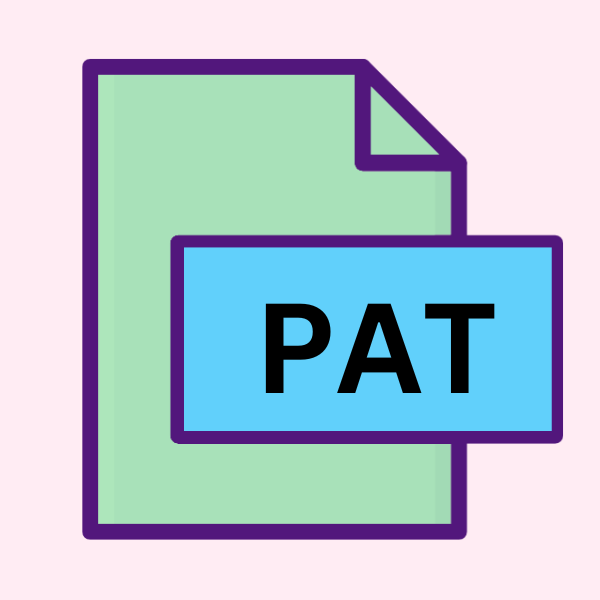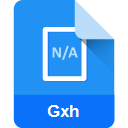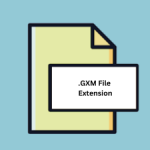.PAT File Extension

What is an PAT file?
.PAT files, short for pattern files, serve as repositories for hatch patterns utilized within AutoCAD and similar CAD software.
These files contain the instructions necessary for rendering various patterns, including lines, dots, and shapes, which are then applied to designated areas within drawings to represent materials such as wood, brick, or gravel.
More Information.
.PAT files were created to streamline the process of applying hatch patterns within AutoCAD drawings. Before the advent of standardized pattern files, users had to manually define hatch patterns using custom scripts or commands, which was both time-consuming and prone to errors.
By consolidating hatch patterns into external files, AutoCAD simplified the workflow, allowing users to access and apply predefined patterns with ease.
Origin Of This File.
The .PAT file extension can be traced back to the inception of AutoCAD, which was first developed by Autodesk in the early 1980s. 3
As the software evolved to meet the demands of architects, engineers, and designers, hatch patterns became an essential component for adding realism and detail to drawings.
Consequently, the need arose for a standardized format to store and share these patterns, leading to the establishment of the .PAT file extension.
File Structure Technical Specification.
.PAT files adhere to a specific structure and syntax dictated by AutoCAD’s hatch pattern definition language.
Typically, these files consist of a series of commands and parameters that specify the characteristics of each hatch pattern.
The syntax includes directives for defining line types, angles, spacing, and offsets, among other attributes.
How to Convert the File?
Converting .PAT files to other formats or vice versa is not a common requirement, as .PAT files are primarily used within the context of AutoCAD and CAD software that support the hatch pattern format.
Users may encounter scenarios where conversion is necessary for interoperability or archival purposes. Below are methods for converting .PAT files:
Convert to Different CAD Software Format:
- AutoCAD: If you need to use the hatch patterns in AutoCAD, there is generally no need to convert .PAT files. Simply import the .PAT file directly into AutoCAD using the hatch pattern editor.
- Third-Party Software: Various third-party CAD software packages, such as BricsCAD and DraftSight, support .PAT files and can be used to open and edit them. If you’re migrating to or from one of these platforms, you can simply import or export the hatch patterns as needed.
Convert to Image Format:
- Export as Image: If you want to use the hatch patterns in graphic design software or other applications that don’t support .PAT files, you can export the hatch pattern as an image file (.PNG, .JPG, etc.) directly from AutoCAD. Simply apply the hatch pattern to a shape or area, then use the “Export” or “Save As” function to save it as an image.
Convert to Vector Format:
- Export as DXF: You can export the hatch pattern as a DXF (Drawing Exchange Format) file, which is a common vector format supported by many CAD and graphic design programs. In AutoCAD, use the “Export” or “Save As” function and choose DXF as the file format.
Convert to PDF:
- Export as PDF: Another option is to export the drawing containing the hatch patterns as a PDF file. Most CAD software, including AutoCAD, allows you to save drawings as PDFs. The hatch patterns will be preserved in the PDF document and can be viewed and printed using any PDF reader.
Convert Using Online Tools:
- Online Converters: There are online conversion tools available that may offer support for converting .PAT files to alternative formats. These tools may vary in terms of reliability and functionality, so be sure to research and choose a reputable service if you opt for this method.
Programming or Scripting:
- Custom Scripts: For advanced users familiar with programming or scripting languages, it may be possible to write custom scripts to convert .PAT files to other formats. This approach offers flexibility and customization options but requires programming expertise.
Advantages And Disadvantages.
Advantage:
- Standardization: .PAT files offer a standardized format for storing hatch patterns, ensuring compatibility across different versions of AutoCAD and other CAD software.
- Efficiency: By storing hatch patterns externally, .PAT files streamline the process of applying textures and patterns to drawings, saving time and effort.
- Customization: Users can create custom hatch patterns tailored to their specific design requirements and save them in .PAT files for future use.
- Portability: .PAT files can be easily shared between users and incorporated into different projects, enhancing collaboration and productivity.
Disadvantage:
- Complexity: Understanding and creating .PAT files require familiarity with AutoCAD’s hatch pattern definition language, which may pose challenges for novice users.
- Limited Compatibility: While .PAT files are widely supported within AutoCAD and compatible software, they may not be compatible with all CAD platforms, leading to potential issues when sharing files.
- Size: Depending on the complexity and number of hatch patterns stored, .PAT files can become large, potentially impacting file storage and transfer.
- Maintenance: Managing a library of .PAT files and ensuring consistency across projects may require additional effort and organization.
How to Open PAT?
Open In Windows
AutoCAD: .PAT files can be directly opened and used within AutoCAD on Windows. Simply navigate to the hatch pattern editor and import the .PAT file.
Open In Linux
LibreCAD: LibreCAD is an open-source CAD software for Linux that supports .PAT files. You can use LibreCAD to open and edit .PAT files, accessing hatch patterns within your Linux environment.
Open In MAC
AutoCAD for Mac: Autodesk offers a version of AutoCAD specifically designed for macOS. You can open .PAT files in AutoCAD for Mac in the same way as you would on Windows, by importing them into the hatch pattern editor.
Open In Android
AutoCAD for Mac: Autodesk offers a version of AutoCAD specifically designed for macOS. You can open .PAT files in AutoCAD for Mac in the same way as you would on Windows, by importing them into the hatch pattern editor.
Open In IOS
AutoCAD Mobile App: Similarly, Autodesk’s AutoCAD mobile app is available for iOS devices. You can use the iOS version of the app to view CAD drawings containing hatch patterns from .PAT files.
Open in Others
- Third-Party CAD Software: Various third-party CAD software packages, such as BricsCAD and DraftSight, are compatible with .PAT files. You can explore alternative CAD software options on different platforms to open and edit .PAT files as needed.
- Online Converters: While less common, there may be online conversion tools or services that allow you to open .PAT files or convert them to other formats. Be sure to research and choose a reliable service if you opt for this method.













